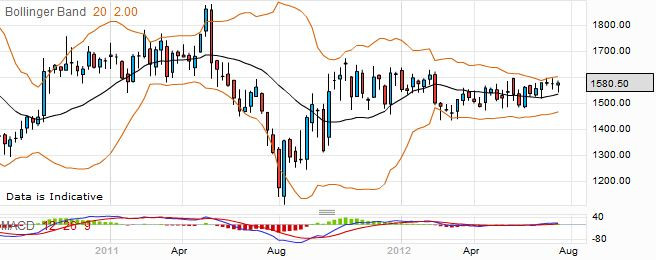Spread Betting Yahoo Shares | Trading Yahoo Stock
Yahoo! Inc. should not need any introduction to you, as it is one of the giants in the Internet field. It started in 1994, and was incorporated in 1995, when the Yahoo.com domain was registered. Yahoo! is not simply a catchy word, but actually stands for Yet Another Hierarchical Officious Oracle, although the irreverence of the word was the deciding factor in naming the company. As a technology company, spread betters will find plenty to like about the way the stock price behaves.

Yahoo! started as a directory of websites, organized in a hierarchy as opposed to a searchable list. It developed through the 1990s as a web portal, and shares reached nearly $120 during the dot-com bubble. They plummeted to around $4 each in 2001.
In 2000, Yahoo! decided to use Google for its search results, but developed its own search engine which is put in place in 2004. Microsoft tried to take it over in 2008, when the company was struggling, but the offer was rejected and the company has never been valued again as highly as the price that Microsoft was going to pay. Recently there have been layoffs and a change of management, and it appears that Yahoo! is reaching a turning point, from which it will either prosper or fail.
Looking at the weekly price chart above, you can see that the market appears to be waiting for Yahoo to sort itself out, as the longer candles and volatility of a year ago have given way to a steady price. The Bollinger Bands are narrowing, which usually means you can expect a breakout in one direction or another in the near future, and no doubt investors are waiting to see how the new management will cope and if they will inject new life in the company.
Yahoo! Inc Trading Example: Yahoo! Inc Rolling Daily
The current rolling daily price for Yahoo Inc. is 1582 – 1587, that is nearly $16 per share. It may be that under new management investors will decide that Yahoo! is going to thrive, and the shares will go up in value. If you believe this, you may want to place a long bet at the buying price of 1587, staking perhaps £5 per point.
If you are right, the price may go up to 1657 – 1662, and you could then close the bet and collect your winnings. With a long bet, the price closes at the selling value, in this case 1657, so your total point gain is 1657 minus 1587, or 70 points. Multiplying by your stake, that amounts to £350 profit. Against that, your account may have been charged a small amount for each evening when the bet was rolled over, but if the bet has only been open for a few days this will not be significant.
Of course, the stock market is very difficult to predict and you should expect to lose a number of your bets. In this case, the price might have gone down to 1536 – 1541, and you could have closed the open trade to cut your losses. The starting price was 1587, and the closing price was 1536, which is a point difference of 51 points. With a stake of £5 per point, your losses would be £255.
Many traders choose to use a stop loss order, placed at the same time that they open the bet, which will ensure that the bet is closed by your spread betting provider if a certain level of loss is reached. If you had used one of these, it might be that your losing bet would be ended at a price of 1551 – 1556. 1587 less 1551 is 36 points, so in this case your losing bet would have cost you £180.
Yahoo! Inc Futures Based Bet
If you think that the change of management will be good in the long-term for Yahoo! Inc., then you may wish to back up this idea by placing a long futures style bet on the far quarter, which is currently quoted at 1581 – 1601. Suppose you decide to stake £4 per point.
With a futures style bet, you can hold the bet open without charge until the expiry date, in this case eight months away. Perhaps after a few weeks or months the price will have gone up to 1693 – 1711, and you decide to close the trade and collect your winnings. Your bet opened at a price of 1601, and it closed at a price of 1693. That means that you gained 1693 minus 1601 points, which is 92 points. With a stake of £4 per point, your bet has won £368.
Of course, the price might have gone down and, even if you think it will go back up in the long run, at some point you may decide to close your bet for a loss, simply so that you do not risk greater losses. Perhaps the price went down to 1516 – 1532, and you decided that was far enough and closed the trade. In this case the starting price was 1601, and the closing price was 1516. The difference is 85 points, which with your wager amounts to a loss of £340.
When you have a potentially long-term bet, it can make sense to use a stop loss order which saves you having to check the price frequently to see if the losses are becoming too great. With a stoploss order, you might find that the bet would have been closed earlier, at 1529 – 1545. With a starting price of 1601 and an ending price of 1529, you would have lost 72 points using the stoploss order, and that would have cost you £288.


Join the discussion